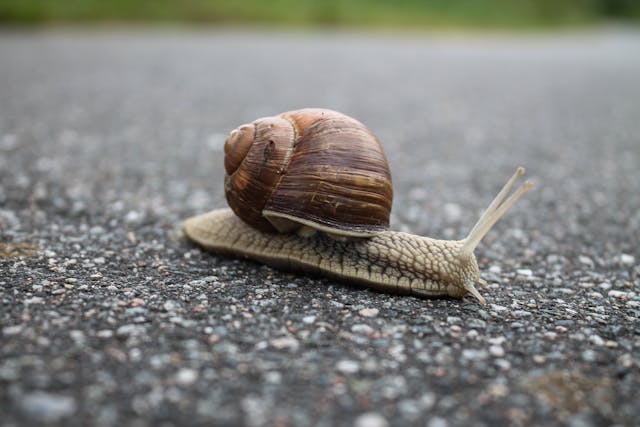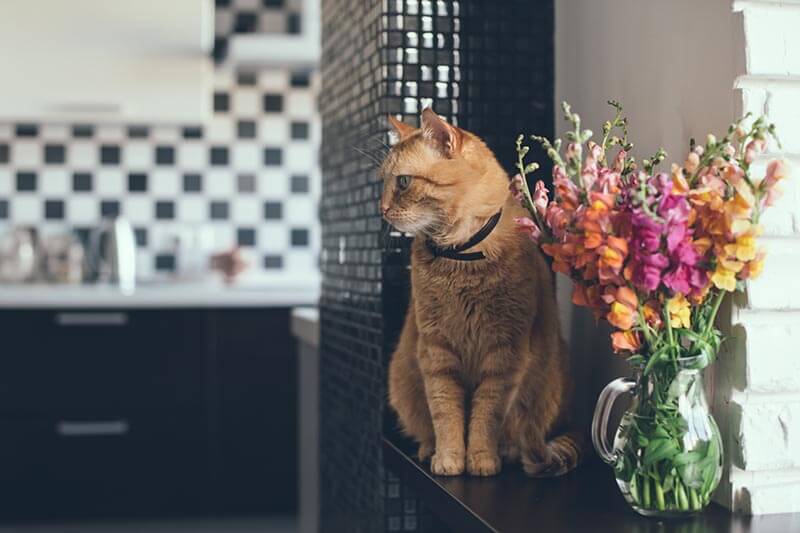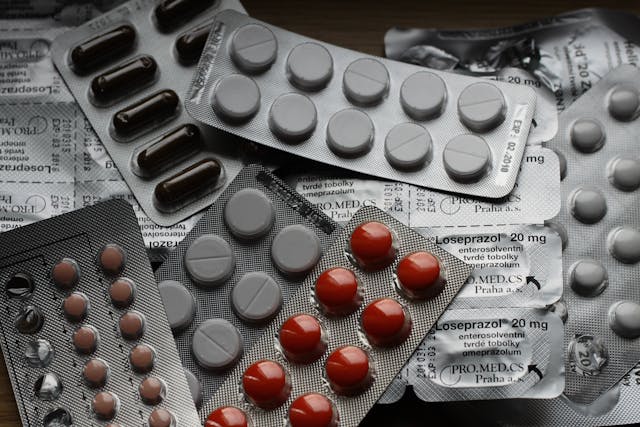Cats are curious creatures, which means sometimes they get into things they shouldn’t. To be safe, you should put anything potentially dangerous out of your cat’s reach. Below is a list of some of the common household items that are toxic to cats.

If you are ever concerned your cat has had access to something toxic, please reach out to your local Greencross Vets, WebVet, or a veterinary emergency centre for advice.
Contents:
- Plants toxic to cats
- Human medications toxic to cats
- Foods toxic to cats
- Essential oils toxic to cats
- Cleaning products toxic to cats
- Insecticides and pesticides toxic to cats
- FAQs about common cat toxins

Lillies and other toxic plants that are toxic to cats
If you have a cat in the house, there are many toxic plants to be aware of. You can read a comprehensive list of plants to look out for in Greencross Vets’ A to Z list of toxic plants. One of the most common & concerning for cats in the home are lilies.
All parts of the lily plant are toxic and potentially fatal to your cat if ingested. Even ingestion of a small amount of pollen dropped onto the fur and groomed off may be enough to cause toxicity.
There are many species of lilies with some causing mild toxicity, such as oral irritation and gastrointestinal signs. The most dangerous lilies are from the Hemerocallis and Lilium species, such as:
- Easter lilies
- Japanese show lilies
- Asiatic lilies
- Stargazer lilies
- Wood lilies
- Red lilies
- Western lilies
- Tiger lilies
- Rubrum lilies
- Daylilies
Signs of lily toxicity in cats occur quickly, typically within 2-4hrs of ingestion.
Symptoms of lily toxicity in cats include:
- Vomiting
- Diarrhoea
- Abdominal pain
- Inappetence
- Lethargy
- Excessive thirst
If left untreated, lily toxicity can result in acute kidney failure within 12-36hrs.
Human medications that are toxic to plants
There are many human medications that can be toxic to cats if ingested, so keeping all medications secure and out of reach of your pets is very important.
Some common household medications that are toxic to cats include paracetamol, anti-inflammatories, and anti-depressants.
Paracetamol (Also known as acetaminophen – E.g. Panadol)
Cats cannot break down paracetamol in their bodies, so any amount can be extremely dangerous for them.
Paracetamol causes toxins to build up in the cat’s blood, leading to red blood cell damage. Red blood cells are important for carrying oxygen around the body. When they’re damaged, they can’t do this job properly, leading to poor oxygenation.
Paracetamol ingestion can also result in liver failure.
Signs of paracetamol toxicity can occur within 1-4hrs of ingestion and red blood cell damage is seen within 4-12hrs.
Symptoms of paracetamol toxicity in cats include:
- Weakness
- Lethargy
- Rapid breathing or difficulty breathing
- A high heart rate
- Panting
- Abdominal pain
- Vomiting
- Drooling
- Discoloured tongue and gums – possibly brown (due to red blood cell damage) or purple/ blue (due to lack of oxygen in their blood)
Anti-inflammatories (E.g. Nurofen, Aspirin, Meloxicam)
Cats are very sensitive to anti-inflammatories. An overdose of prescribed medication or ingesting human medications runs a high risk for toxicity.
Anti-inflammatory toxicities can affect multiple body systems depending on the drug and magnitude of the overdose. The main body systems that may be affected are the gastrointestinal system, causing inflammation and potentially gastric ulcerations; kidney damage, resulting in kidney failure; and the central nervous system.
Signs of anti-inflammatory toxicity in cats include:
- Vomiting – potentially containing blood
- Diarrhoea,
- Black-tarry stools
- Inappetence
- Respiratory difficulties
- Weakness
- Excessive drinking and urination
- Muscle tremors
- Seizures
- Collapse
- Death
Anti-depressants
With the increase in awareness of mental health issues among humans, pets are having more potential access to anti-depressant medications. These medications affect the brain and central nervous system.
Signs of anti-depressant ingestion in cats include:
- Sedation
- Hyperexcitation or agitation
- Vomiting
- Tremors
- Seizures
- Hyperthermia
- Diarrhoea
- Abdominal pain
- Dilated pupils
Foods that are toxic to cats
Many popular human foods and drinks can be toxic to cats. Some of the key ones to be aware of include:
- Onions
- Garlic
- Chives
- Chocolate
- Coffee
- Xylitol (An artificial sweetener)
- Grapes and raisins/sultanas
- Alcohol
These foods can affect a range of body systems and cause a variety of symptoms depending on the toxin. Common signs of food toxicities include:
- Gastrointestinal upset (vomiting or diarrhoea)
- Kidney and liver failure signs, such as excessive drinking and urinating or discoloured gums
- Neurological signs, such as seizure

Essential oils are toxic to cats
Essential oils are found in products like diffusing oils, candles, shampoos, ointments, cleaning products, and air fresheners.
In products where the oil is relatively dilute, such as in hand lotions or shampoos, the risk of toxicity is generally low if a small amount is licked up. However, if a large volume is ingested or if cats are exposed to concentrated products like diffuser bottles, they are at much higher risk. Even small amounts of concentrated products can lead to serious health issues.
Essential oils not only cause toxicity when ingested but also when the fumes are inhaled. Cats are especially sensitive to these essential oil fumes.
Common toxic essential oils include:
- Tea tree
- Citrus
- Eucalyptus
- Liquid potpourri
- Wintergreen
Signs associated with essential oils toxicity in cats include:
- Excessive salivation
- Vomiting
- Diarrhoea
- Depression
- Disorientation
- Unsteadiness
- Seizures
- Weakness
- Collapse
Cleaning products that are toxic to cats (e.g. bleach, detergent, drain cleaner, disinfectants)
Cats are very sensitive to smells and are fastidious groomers. Aerosolised cleaning products can irritate their nasal passages and airways. And, if droplets cleaning products get on the fur or are stepped on, cats are likely to ingest them during grooming.
Signs of toxicity caused by cleaning products will vary depending on product exposure.
If cats inhale an irritating substance, they may experience:
- Respiratory difficulties
- Coughing
If cats ingest a toxic cleaning product, signs include:
- Drooling
- Ulcers in the mouth
- Oral pain
- Vomiting
- Inappetence
- Diarrhoea
- Abdominal pain

Pesticides and insecticides that are toxic to cats
Snail Pellets
Snail pellets are highly toxic to cats. Small amounts are all that is needed to result in toxicity.
Snail pellets affect the neurotransmitters within the body, molecules that are important for the function of nerves and organs. Toxicity results in central nervous system excitation rapidly after ingestion. Pets need rapid intervention by emergency vets to have a chance at survival.
Signs of snail pellet toxicity in cats include:
- Excessive drooling
- Vomiting
- Diarrhoea (which can be coloured green/blue depending on the pellet type ingested)
- Panting
- Fever
- Tremors
- Seizures
- Dilated pupils
- Lethargy
- Collapse
- Death
Muscle tremors and seizures resulting from this toxicity occur within 30 minutes to 3 hours after ingestion.
Rat Bait
The most common rodenticides work by depleting the body’s Vitamin K reserves. Vitamin K is needed for normal blood clotting. When these stores are depleted, the body experiences bruising and bleeding easily.
As a result of rat bait ingestion (either directly by eating the bait, or indirectly by eating a mouse or rat that consumed the bait), cats become anaemic.
Signs your cat has ingested a rodenticide that targets vitamin K include:
- Pale to white gums
- Very small blood spots on the gums
- Bruised skin
- Urinating blood
- Nose bleeds
- Weakness
- Inappetence
- Breathing difficulties
Some other rodenticide types can affect the brain, kidneys, liver and gastrointestinal tract significantly, leading to signs such as:
- Abdominal pain
- Seizures
- Collapse
- Excessive thirst and urination
- Jaundice (yellow colour to the gums and whites of the eyes)
Ant traps and pesticide sprays
Ant traps often contain baits to attract ants, which can also attract curious cats. Not only are these ingredients toxic to cats, but they can also lead to gastrointestinal issues, including obstruction, from ingestion of the plastic and cardboard packaging as they attempt to get to the bait.
When it comes to pesticide sprays, they are often okay once dried appropriately (according to the product recommendations). The trouble comes when cats contact the droplets from the spray before they have fully dried, then they can ingest the product and become unwell.
Signs of ant trap and pesticide toxicity in cats vary depending on the quantity and type of insecticide ingested and may include:
- Excessive drooling
- Inflammation of the mouth
- Oral pain
- Lethargy
- Inappetence
- Diarrhoea
- Vomiting
- Abdominal pain
- Trembling
- Disorientation
- Unsteadiness
- Irritated skin

Frequently asked questions about common cat toxins
Are cane toads toxic to cats?
Though cane toad toxicity is seen less in cats than it is in dogs, cane toads are still toxic to cats.
Cane toads excrete toxins through their skin which cats can ingest these when they make direct contact, usually by licking or try to bite a toad. Signs of toxicity from cane toad toxin usually present within 30-60minutes of contact.
Signs of cane toad toxicity in cats include:
- Foaming at the mouth/excess salivation
- Red (not pink) gums
- Vomiting or retching
- Increased breathing rate
- Unsteadiness
- Rapid eye movement from side to side
- Increased anxiety
- Shaking
- Vocalising
- Disorientation
- Enlarged pupils and/or blank stare
- Collapse
- Seizures
What do I do if my cat has eaten something toxic?
If you’re ever concerned your cat has been exposed to a toxin, contact your nearest veterinarian, emergency veterinary hospital, or Animal Poisons Hotline as soon as possible.


